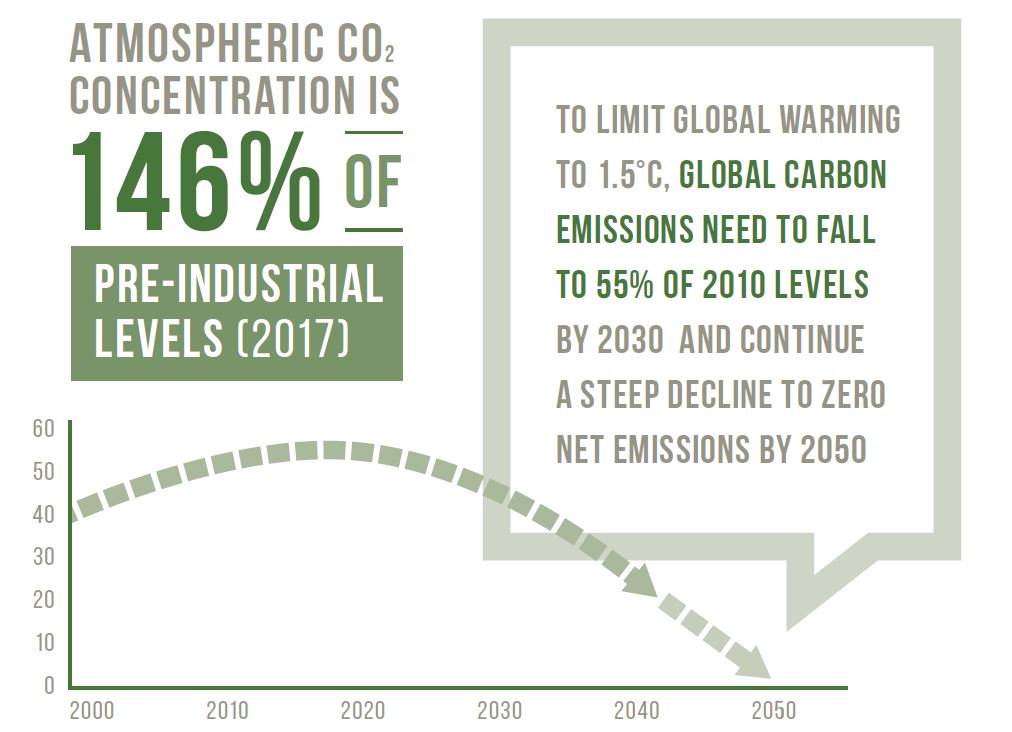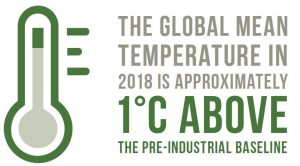As greenhouse gas levels continue to climb, climate change is occurring much faster than anticipated, and its effects are evident worldwide. The global mean temperature for 2018 was approximately 1°C above the pre-industrial baseline, and the last four years have been the warmest on record. Sea levels continue to rise at an accelerating rate.
Climate change is the defining issue of our time and the greatest challenge to sustainable development. Its compounding effects are speeding up its advance, leaving very little time to act if we want to prevent runaway climate change. Limiting global warming to 1.5°C is necessary to avoid catastrophic consequences and irreversible changes. That will require rapid and far-reaching transitions in energy, land and urban infrastructure and industrial systems.



